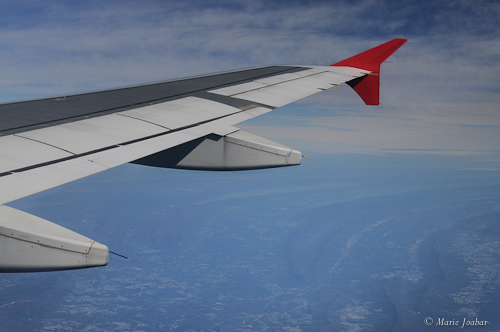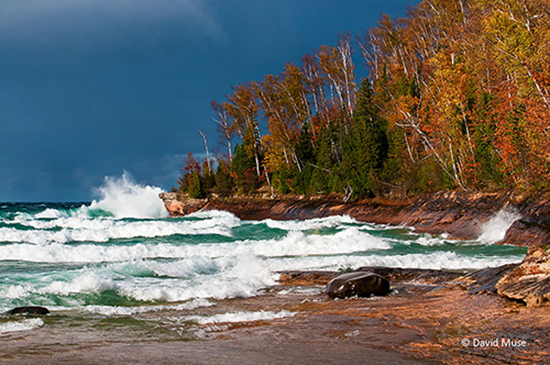 It’s summertime and that usually means vacations and travel.
It’s summertime and that usually means vacations and travel.
If flying is in your plans, packing your camera equipment requires careful consideration. Deciding ahead of time what gear to take, which bag to carry it in, how to pack it, what’s allowed by the airlines as well as knowing the TSA rules and the rules in foreign countries can help you enjoy your travel with less stress and worry.
Check out the expert advice from some of our instructors. Since they travel often leading photo workshops in the U.S and internationally, they’ve ‘been there’ and ‘done that’ and their insight can be helpful as we plan for our next trip.
Tim Cooper, E David Luria, David Muse, Roy Sewall, and Moshe Zusman all weigh in and offer excellent advice.
Tim Cooper
“Look for camera bags that fit onto a regional jet overhead space. This is the smallest of the small and if it fits here it will fit anywhere. If your bag is too big to fit in an overhead, take out your body and lenses, wrap them in some clothing and place them in a roller briefcase (or other bag) that will fit under the seat. Your camera bag can still contain some non-sensitive things like filters, cables, etc. just fill the remaining spaces with clothing for padding. This way it can be checked and you will have it upon arrival but you don’t have to worry about damaging your valuables.
I always take the head off my tripod. I wrap the legs and head separately in a coat or in pants and put them inside my checked bag.
Consult your airline website to find out how large the overhead compartments are so you can be better prepared instead of juggling at the last minute.”
E. David Luria
“When traveling on personal vacation, I just bring my APS-C DSLR, an 18-250mm lens and a 10.5 mm fisheye, and an external flash. I sling the camera over my shoulder and carry the lens and flash in my pocket.
When traveling on photo business, I bring all my gear in a carry-on hip bag and sling the tripod over my shoulder, no trouble with TSA so far.”

David Muse
“Follow your airline’s maximum dimensions for carry-on items and their weight limits for luggage.
Carry your tripod head in your camera bag but pack your tripod inside your checked suitcase. Rolled socks placed between the tripod legs provide plenty of shock absorption.
On both domestic & international flights I use the LowePro Photo-Trekker AWII backpack to hold two DSLR bodies, 12-24mm, 28-70mm, and 70-200mm lenses.
For wildlife photo trips, the backpack holds my camera bodies, 70-200mm, 300mm, and 200-400mm f/4.0 lenses. All this gear weighs plenty, so I forgo my laptop. Instead I carry extra CF cards and wait until I return home to upload the cards. For peace of mind, I use my tried & true Colorspace UDMA storage device (250 GB) to back-up the CF cards.
I pack my clothes in a smaller camera bag and use it as checked luggage. Once at my destination, I pack this smaller bag with only the gear I need on a particular day. I secure the larger, heavier backpack with a TSA approved combination lock & leave in my hotel room.”
Roy Sewall
“The very first step is to look at all legs of your journey to understand the specific aircraft restrictions such as weight and size, and to determine whether you will be working mostly from a car (such as on a long car trip) or getting out and walking quite a bit.
If my rolling case will fit in the overhead carry-on compartment I will load it up with body, lenses, flash, tripod head, hard disks, and anything else that is sensitive. Caution: even if a rolling case has a compartment for a laptop, it might no longer meet the size restrictions if the laptop is in the case; this is true for my Tamrac.
I bring a sturdy medium/small gym bag for magazines, iPad, laptop, and any sensitive gear that doesn’t fit in the rolling case. I’m prepared to put the gym bag under my feet on the floor if necessary. The tripod and other photo accessories go into a large rolling duffel bag along with shoes, clothes, and everything else, and the duffel bag gets checked. If it gets over 50 lbs (United’s limit) I move a few items to the gym bag.
 I pack the Think Tank belt system that includes a holster for the body and one lens, a pouch for each other lens, and a final pouch for accessories. This is my preferred way to carry gear once I’m at my destination and am in the field because it carries the weight on your hips rather than putting any pressure on your back, and allows me to access gear and switch lenses around without putting anything on the (sometimes wet and muddy) ground like you have to with a backpack.
I pack the Think Tank belt system that includes a holster for the body and one lens, a pouch for each other lens, and a final pouch for accessories. This is my preferred way to carry gear once I’m at my destination and am in the field because it carries the weight on your hips rather than putting any pressure on your back, and allows me to access gear and switch lenses around without putting anything on the (sometimes wet and muddy) ground like you have to with a backpack.
I prefer not to wear my belt full of gear on board as it gets old having it on in the airports, it bangs fellow passengers’ heads when walking the aisles, and the gear is somewhat more vulnerable than in a sturdy rolling case.
If I know that the rolling case won’t fit in the overhead compartment the challenges mount up quickly. I abandon the rolling case, wear the belt, bring the gym bag, and pray that there is enough room. I make liberal use of pieces of bubble wrap in the gym bag. Once on board I determine the arrangement of belt and gym bag in the overhead compartment and under my feet.
There is a strong likelihood that TSA will want to open your rolling case, gym bag, belt, or whatever during the security check. I suggest being polite, cooperative, and making no jokes.
There are instances where foreign flights have severe weight and size restrictions, but I have not yet personally encountered them except in Slovenia. Before I sorted all of this photo travel out, I took my rolling case to Slovenia only to find that the leg from Vienna to Llubljana had very limited overhead space. Once on-board I pleaded with the captain to find a place to put it somewhere on board, but he said there was none. I asked him what he thought I should do. He said he would personally place the rolling case into the small aircraft’s hold, on top of all other items, and personally remove it at the end of the flight. Hats off to Lufthansa! Don’t count on this as part of your travel strategy!”
Moshe Zusman
 When traveling, I try to keep my gear in its most portable and secure form. I never skip taking a backup camera and backup flashes with me, but I make sure I minimize the load by only taking the essential lenses for the specific assignment.
When traveling, I try to keep my gear in its most portable and secure form. I never skip taking a backup camera and backup flashes with me, but I make sure I minimize the load by only taking the essential lenses for the specific assignment.
For off camera lighting, I prefer speedlites over strobes for extra portability and minimal weight. Light stands are sometimes a must, but I will try to take the shorter ones versus the heavier and longer stands. If possible, I will rent those on location.
I pack all my camera gear in a carry-on size bag that must fit in even the smallest airplanes and I always keep an eye out for new TSA or airline specific restrictions - I can’t risk having to check a bag with cameras.
ThinkTank Photo bags really work well with all my gear and I have a variety of bags that can fit any assignment that comes up. Extra off camera lights and accessories such as speedlites, speedrings, softboxes and other light shapers go in a Pelican case - a hard, rolling case with locks.
If I do need strobes on my destinations, I either carry my Profoto lights in their cases which are very well built for traveling OR rent on location.”

The TSA lists, “the maximum size carry-on bag for most airlines is 45 linear inches (the total of the height, width, and depth of the bag)” but the size of the overhead in each carrier is different so below is a list of some of the most popular domestic airlines and links to their baggage info including carry-on bag size requirements.
American - http://www.aa.com/i18n/travelInformation/baggage/carryOnAllowance.jsp
Delta - http://www.delta.com/content/www/en_US/traveling-with-us/baggage/during-your-trip/carry-on.html
Jet Blue - http://help.jetblue.com/SRVS/CGI-BIN/webisapi.dll/,/?St=148,E=0000000000110884006,K=1875,Sxi=6,case=obj%28633%29
US Airways - http://reservations.usairways.com/en-US/traveltools/baggage/baggagepolicies.html
SouthWest - http://www.southwest.com/html/customer-service/baggage/carryon-bags-pol.html
Spirit - https://customersupport.spirit.com/hc/en-us/articles/202096476-What-are-the-size-and-weight-limits-for-bags-
Frontier - http://www.flyfrontier.com/customer-service/travel-support/baggage/carry-on-baggage
Alleginat - http://www.allegiantair.com/popup/optional-services-fees#baggage
